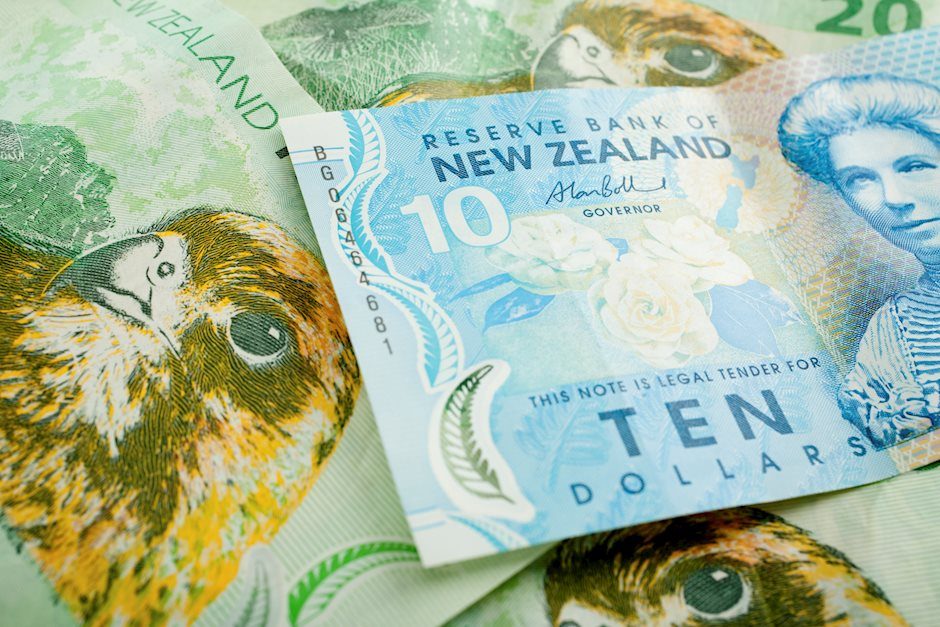NZD/USD holds positive ground above 0.6050, New Zealand CPI eases more than expected in Q2
- NZD/USD trades on a positive note near 0.6065 in Wednesday’s early Asian session, up 0.23% on the day.
- New Zealand CPI inflation eased more than expected in the second quarter, triggering RBNZ rate cut expectations.
- US Retail Sales unchanged in June.

The NZD/USD pair trades on a stronger note around 0.6065 on the weaker US Dollar (USD) during the early Asian session on Wednesday. The New Zealand Dollar (NZD) edges higher after the release of the New Zealand Consumer Price Index (CPI) reading. Later in the day, the US Building Permits, Housing Starts, Industrial Production and the Fed Beige Book are due. The Federal Reserve’s (Fed) Barkin and Waller are also scheduled to speak.
Data released by Statistics New Zealand on Wednesday showed that the country’s Consumer Price Index (CPI) rose 0.4% QoQ in the second quarter (Q2), compared to 0.6% in the previous quarter. This figure was below analysts' forecasts of 0.6%. The annual rate of CPI inflation fell to its lowest rate in three years, coming in at 3.3% YoY in Q2 from a 4% rise in the 12 months to the March 2024 quarter.
Finance Minister Nicola Willis said that the recent inflation rate showed "we are turning our economy around and winning the fight against rampant inflation.” Westpac analysts noted that more signs of easing inflation could give the RBNZ enough confidence to begin cutting rates as soon as November.
On the USD’s front, the US Retail Sales for June did not change much for the central bank's expectations. Retail Sales in the United States held steady at $704.3 billion in June, after a 0.3% gain (revised from 0.1%) in May and in line with market expectations. Retail sales grew 2.3% year over year in June. Traders are currently betting that the Fed will start cutting the interest rate at the September 17-18 meeting, which might drag the Greenback lower and create a tailwind for NZD/USD.
New Zealand Dollar FAQs
The New Zealand Dollar (NZD), also known as the Kiwi, is a well-known traded currency among investors. Its value is broadly determined by the health of the New Zealand economy and the country’s central bank policy. Still, there are some unique particularities that also can make NZD move. The performance of the Chinese economy tends to move the Kiwi because China is New Zealand’s biggest trading partner. Bad news for the Chinese economy likely means less New Zealand exports to the country, hitting the economy and thus its currency. Another factor moving NZD is dairy prices as the dairy industry is New Zealand’s main export. High dairy prices boost export income, contributing positively to the economy and thus to the NZD.
The Reserve Bank of New Zealand (RBNZ) aims to achieve and maintain an inflation rate between 1% and 3% over the medium term, with a focus to keep it near the 2% mid-point. To this end, the bank sets an appropriate level of interest rates. When inflation is too high, the RBNZ will increase interest rates to cool the economy, but the move will also make bond yields higher, increasing investors’ appeal to invest in the country and thus boosting NZD. On the contrary, lower interest rates tend to weaken NZD. The so-called rate differential, or how rates in New Zealand are or are expected to be compared to the ones set by the US Federal Reserve, can also play a key role in moving the NZD/USD pair.
Macroeconomic data releases in New Zealand are key to assess the state of the economy and can impact the New Zealand Dollar’s (NZD) valuation. A strong economy, based on high economic growth, low unemployment and high confidence is good for NZD. High economic growth attracts foreign investment and may encourage the Reserve Bank of New Zealand to increase interest rates, if this economic strength comes together with elevated inflation. Conversely, if economic data is weak, NZD is likely to depreciate.
The New Zealand Dollar (NZD) tends to strengthen during risk-on periods, or when investors perceive that broader market risks are low and are optimistic about growth. This tends to lead to a more favorable outlook for commodities and so-called ‘commodity currencies’ such as the Kiwi. Conversely, NZD tends to weaken at times of market turbulence or economic uncertainty as investors tend to sell higher-risk assets and flee to the more-stable safe havens.
Author

Lallalit Srijandorn
FXStreet
Lallalit Srijandorn is a Parisian at heart. She has lived in France since 2019 and now becomes a digital entrepreneur based in Paris and Bangkok.

















